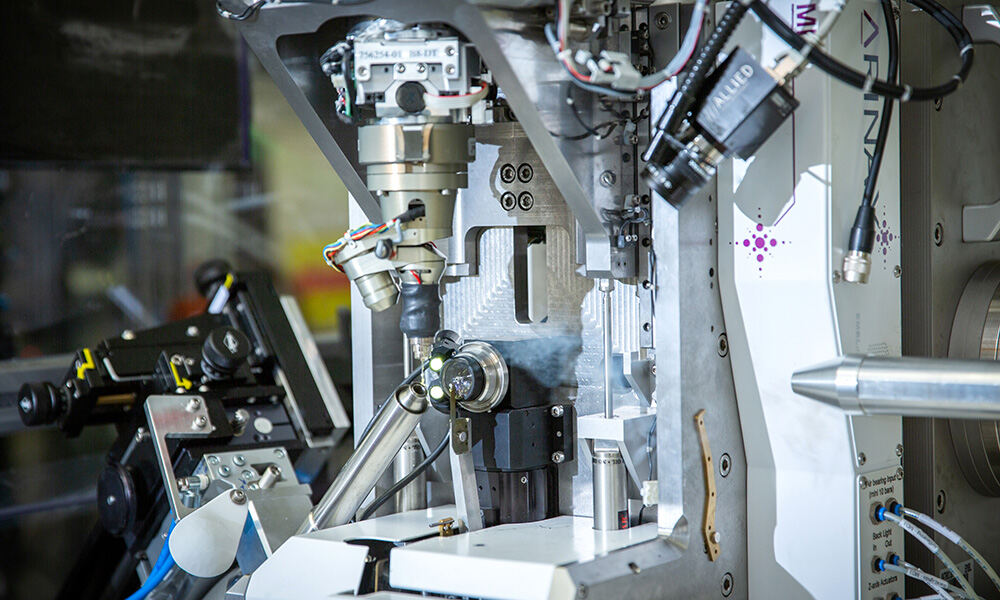The Instrumentation Team at EMBL Grenoble has developed innovations to further advance the capabilities of EMBL technologies, such as X-ray crystallography.
X-ray crystallography involves shining intense X-ray beams at protein crystals to determine their structure. When the high-brilliance, third-generation synchrotron source at the ESRF opened in 1994, the entire operation of sample handling on crystallography beamlines was done manually.
Since the opening of the synchrotron source at the ESRF, the Instrumentation Team at EMBL Grenoble has worked closely with the ESRF Structural Biology Group to pioneer instruments and automate crystallography beamlines to increase the efficiency of structure determination processes, from sample preparation to data collection. Two of the most notable inventions are micro-diffractometer devices (called MD2 and MD3), which are goniometer devices that enable the automated and high-precision positioning of protein crystals in an X-ray beam, significantly increasing the efficient use of beamtime at synchrotrons.
